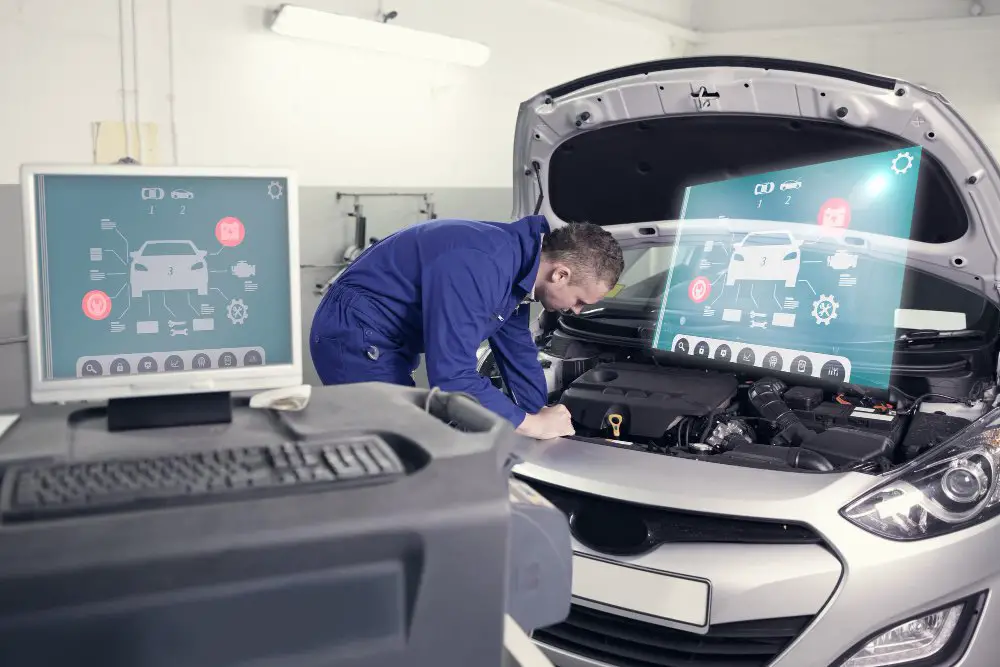The market for automotive software and electronics is expected to expand from $238 billion in 2020 to $469 billion in 2030, according to a report by McKinsey & Company. To assure the safety, reliability, and conformity with safety rules, automobiles, their parts, and their systems are put through an array of tests in the lab, virtually, and in real-world scenarios.
Conducting testing requires preparation, design, and execution. Testing is still an expensive process. It takes a lot of effort and money, and the danger level rises or falls with the method used. For these reasons, automotive software testing is often undervalued.
Challenges of Automotive Testing?
Lack of skilled testers
Most testers, sadly, need more resources to adapt to the changes brought on by these new developments. Many organizations need help keeping up with strategic software capabilities.
Verification and validation challenge
During the verification and validation phase, the most significant problem at the test engineering level is ensuring that the systems work as specified in various situations and combinations.
Absence of testable physical equipment
A vehicle’s safety requirements preclude using virtual machines for all tests. As the automotive software is deployed to actual devices, security testers must ensure it is not vulnerable to attacks. Nevertheless, final testing hardware can be challenging because it is often produced in sync with the automobile production schedule.
Cybersecurity issues
Cybersecurity used to be a distinct discipline, but as the automobile industry grows software-based, it has become an integral part of safety. Using a drone fitted with a Wi-Fi dongle, two security researchers in May of 2021 were able to get into a Tesla Model X in about 40 minutes. The researchers had full access to the vehicle, including the ability to open and lock the doors, alter the speedometer settings, and so on. Even though Tesla invests much in cybersecurity, the business has been hacked.
Can Automotive Testing Be Valuable Enough to Address The Challenges?
Customer retention
A satisfied clientele is essential to every thriving business. Nonetheless, every company has the same overarching goal: to provide exceptional service or products to their clientele. As a result, goods should undergo thorough testing to ensure they are error-free before release. Users are always happier while working with bug-free programs.
Product caliber
For continued success in the marketplace, it is essential that a firm consistently provides customers with superior goods. Automated software testing aims to verify that a product has been built to specifications and is up to pace with industry standards.
Security
There have been several cyberattacks in the modern digital era. Hackers and other unauthorized users can access and steal user data and use it for their ends. As a result, users are less likely to embrace a program that does not meet appropriate safety requirements. Consumers want to be sure that the product they’re buying is safe from hacks and flaws.
Cost-effective
Cost-effectiveness is a critical factor in software testing. Finding and resolving a flaw in software often leads to the appearance of a new bug. If all potential flaws are found and addressed early in the software development process, the cost to remedy them will be far more manageable.
Reducing the possibility of failure due to individual parts
Testing is performed on each vehicle before it leaves the factory to reduce the likelihood of a recall due to a technical problem.
Adjusting to local standards
Regarding automobile electronics, different countries have different rules (EU Low Voltage, EMC Directives). Manufacturers must meet those requirements to introduce their products to a specific market or area.
5 Best Practices for Automotive Testing
Prerequisites for a high-quality building
The clarity in the requirements documentation should begin with the design phase. This will be useful for fixing bugs and addressing specific features. A well-written demand will be True, Reasonable, Attainable, Urgent, and Testable.
Use of a prototype to verify a design
Validation is a crucial part of any design process. This is of paramount importance if we reach any meaningful technological milestones. To do this, it is necessary first to develop functioning prototypes. The interface is a starting point in the prototyping process for design validation. It confirms the depth and breadth of the application’s testing even further.
Making a test-friendly software application
The software’s architecture should allow for a fast and reliable development and testing process. It takes focus and extra work to write code that can be tested. Instead of making the software difficult to test, creating it using short modules with well-defined requirements is preferable.
Coding style
Software applications should have a coding style consistent with established norms in the industry. Because of this, the final product is sure to be competitive. Several different things can influence the choice of coding style. Such examples include
- the capitalization of keywords and variable names,
- the structure of the source code,
- the indentation level, and
- the amount of white space around operators and keywords.
Test case completion
Tests for correctness reveal how well standards are met. Contrast this with completeness tests, which emphasize the combination of values that assist in measuring the software’s robustness. The ad hoc nature of testing is eradicated, and consistency is brought in by creating comprehensive test cases.
Implement fuzz testing
Fuzz testing, often known as fuzzing, is an effective security testing method involving injecting car software components with random data and checking for flaws. Fuzz testing is an effective method for locating exploitable flaws in software that hackers might exploit to gain unauthorized access, cause the program to crash, alter its behavior, leak memory or data, or even install backdoors.
Conclusion
For the foreseeable future, the automotive industry will be driven by software. To collect real-time user data for continuous feedback and enhancements, use tools to smoothen your automotive testing journey. The HeadSpin infotainment automation testing platform with the SDK solution helps to test automotive software faster and more effectively.


















